Evolving with the fast-growing online market scene has become more important than ever for the survival of eCommerce businesses. Headless commerce offers eCommerce retailers the scalability, functionality, and flexibility crucial for their success.
If you’re new to the concept of headless commerce and want to know what it’s all about, we’ve prepared a crash course just for you.
In this guide, we will explain what headless commerce is and why it’s worth considering. We will also look at its many use cases and see how different companies are using it, which might just inspire you to start your own journey into headless commerce.
What Is Headless Commerce?

Headless commerce is an eCommerce architecture where the front-end presentation layer (the “head”) is decoupled from the back-end commerce functionality. This separation lets businesses deliver content and products to consumers through any channel or device. They can use APIs to connect the back-end with various front-end interfaces, like websites, mobile apps, social media platforms, and IoT devices.
Dirk Hoering first introduced the term headless commerce back in 2013 to describe this separation of the new multi-headed approach from the old single-head suite platforms. Simply put, it was a shift from a commerce-led approach toward a content-led approach based around a content management system (CMS) like Shopify, Oracle ATG, and Salesforce Demandware.
With this approach, you can optimize the same content across various channels and devices by separating the front end and back end with a headless CMS. Plus, different eCommerce functionalities – like inventory, cart, and other backend services – and CMS (the front end) data are synced with application programming interfaces (APIs).
How Does Headless Commerce Work?
Since consumer trends are always changing, it’s important you adopt an omnichannel approach to your sales and marketing. However, if done wrong, it can increase costs and decrease business value.
This is where headless commerce comes into play. It lets you adopt, deploy, and scale an omnichannel sales approach without increasing your overall business costs.
Its architecture includes the backend, which handles commerce services and business logic, and a decoupled frontend, which is the presentation layer that your customers interact with.
The APIs pull information from the backend and display it in the front end, facilitating communication between the 2.
The 3 Primary Headless Commerce Elements
Let’s look at the 3 elements of your headless commerce infrastructure to fully understand how it works.
1. A Headless CMS
A headless CMS manages and centralizes content on the backend, feeding it to various front-end displays via APIs. It helps the development team design device-specific and unique displays for individual sales channels while tapping into other frontend touchpoints’ shared content.
2. APIs
APIs allow services and applications, even those using different frameworks, to communicate with one another. Unlike traditional eCommerce platforms and processes that use a single programming language or a single technology to develop applications, your development team will have more freedom to choose the best tools, languages, and technologies for the company’s or project’s needs.
Whenever a request is made in a headless commerce solution, APIs push the information to the frontend from the backend. The integration and coordination of multiple APIs from different sources into a single, coherent system is called API orchestration.

3. Backend Systems
Backend systems are the single modules of the components that manage, handle, and collect information and data. They include:
- Product Information Management (PIM)
- Pricing & Promotions
- Order Management Systems (OMS)
- Inventory Management
- Customer Relationship Management (CRM)
- Cart & Checkout.

The 2 Types of Headless Commerce Solutions
Composable commerce and modular commerce are 2 types of headless commerce solutions that are often used interchangeably. While they both have bases in headless commerce and share some similarities, they’re completely different.
1. Modular Commerce
This involves breaking down an eCommerce system into separate, pre-built components or modules. It uses modular microservices that operate independently from one another, each dedicated to a specific functionality or task. These microservices rely on APIs to communicate with the CMS and the front end.
2. Composable Commerce
Composable commerce allows brands to choose solutions that best fit their individual business needs while building upon the concept of modular commerce. It composes all the solutions into a fit-for-purpose technology stack.
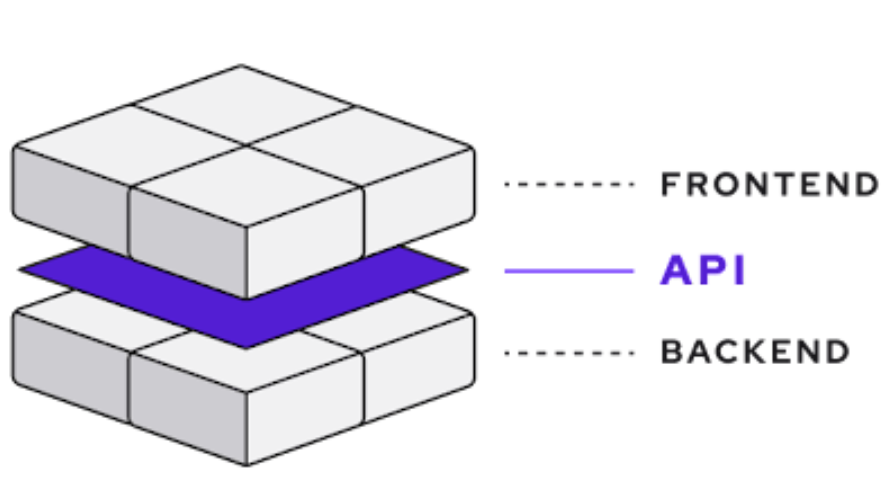
The 4 Primary Differences Between Headless Commerce & Traditional eCommerce
Before you select a solution, you need to understand the difference between headless commerce and traditional eCommerce. Let’s take a look.
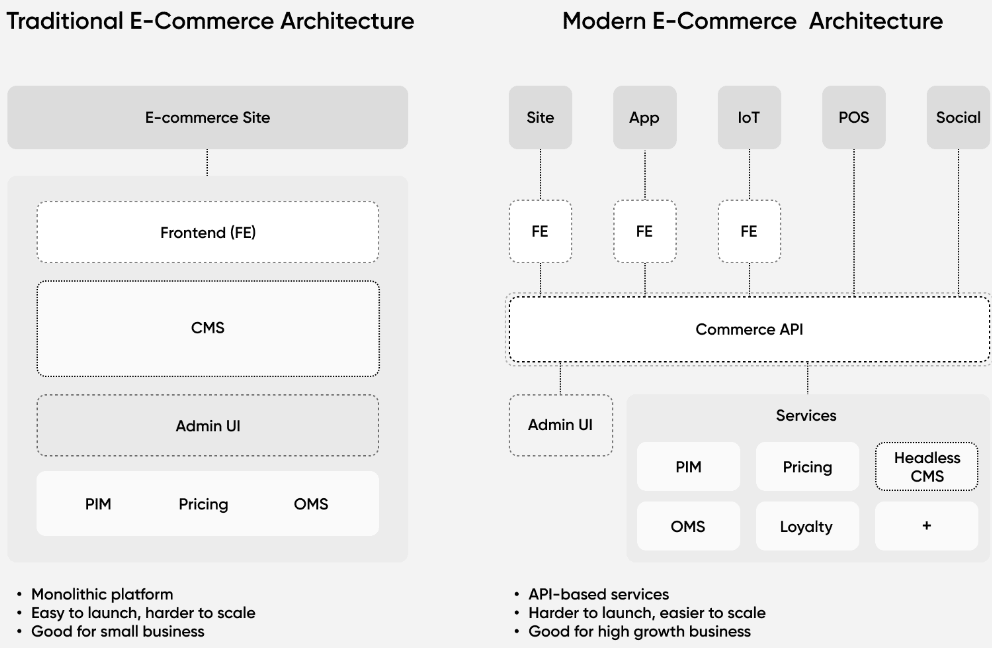
1. Development Speed
The development speed of headless commerce is usually faster in the long run despite the additional effort it requires during the initial setup.
Developers can quickly prototype and deploy new channels or features with the help of the latest technologies and tools. Adaptation to changing market trends and innovation becomes faster because of this agility, letting brands introduce new, high-demand products like the ones listed in this guide.
In traditional eCommerce platforms, getting started can be quicker since many features are pre-integrated. However, when you’re adding new functionality or doing customizations, development is slowed down because of platform limitations.
2. Performance & Scalability
You can independently scale frontend and backend systems because they are separated in a headless architecture. This ensures better performance during high transaction volumes or increased traffic during peak periods.
On the other hand, traditional eCommerce platforms are usually costly and complicated to scale. You may face system performance and traffic-handling limitations as your business grows.
Plus, when upgrading or adjusting the traditional eCommerce platforms, you have to make some major changes to the entire platform as well as to other systems that are integrated with it. This means significant downtime and some major challenges.
3. Omnichannel Experience
Since the same content is pulled from a headless CMS and pushed to touchpoints in the correct format, headless commerce offers a consistent buying experience across channels.
Plus, with the help of a modern distributed order management system, headless commerce can deliver omnichannel fulfillment experiences.
On the other hand, delivering a smooth omnichannel experience becomes challenging if you are using a traditional eCommerce platform. There’s a high chance that your customers will have inconsistent experiences because when you make adjustments to accommodate different channels, it impacts your backend systems.
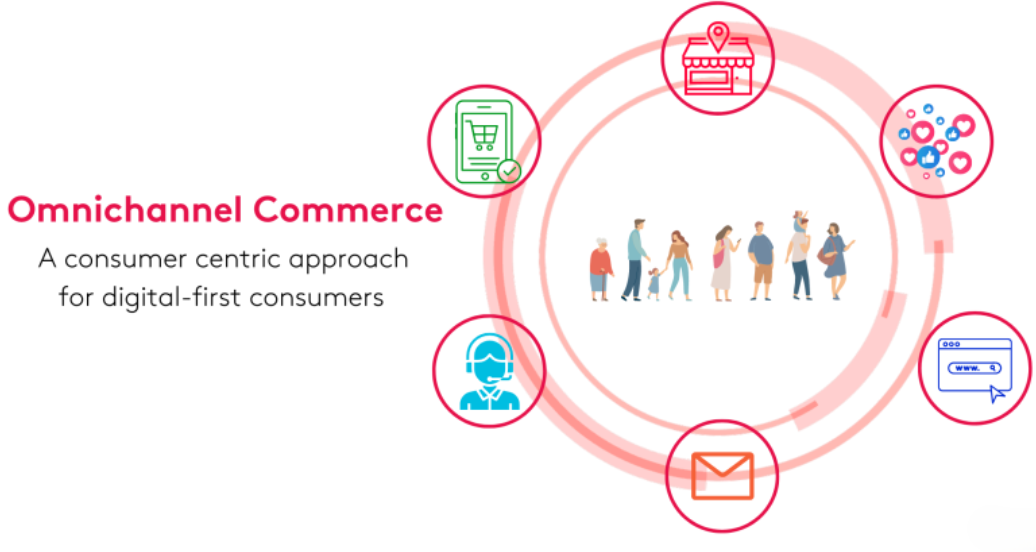
4. Backend Commerce Functionality & Frontend Presentation Layer
As we mentioned earlier, the backend and the presentation layer are decoupled in a headless commerce architecture. This means any changes to your payments, promotions, pricing, order, and inventory can be made independently from the frontend user interface and vice versa.
Plus, your developers can use modern frameworks and technologies to build highly interactive, visually appealing, and unique storefronts that match customer preferences and brand identity. This makes headless commerce more scalable, customizable, and flexible across channels and devices.
On the other hand, the front-end and back-end are tightly coupled in a traditional monolithic eCommerce setup. This simplifies operations but it also limits your choices of specialized solutions.
The options for frontend designs are also limited because traditional eCommerce platforms have predefined layouts and templates. Plus, if you want to change your frontend, you need to make big changes to your backend as well, which can be very challenging. So you have to put in extensive work and development time to customize your website’s user interface.
The 8 Primary Benefits Of Headless Commerce
Companies that use headless commerce see an average 42% increase in conversion rates. If you are still not convinced, here are 8 more reasons why switching to headless commerce is exactly what your business needs.
1. Easy Implementation Of New Technologies
You can integrate your headless commerce platform with other internal systems and tools, like HubSpot and Shopify, with the help of APIs. You can also enhance functionality by connecting your headless solution with third-party applications, like Klaviyo, Stripe, or Google Analytics.
2. Supports Content-Rich Experiences
Marketing teams and eCommerce merchandisers with traditional eCommerce platforms have limited options for developing new customer experiences on the front end.
According to PxC, 73% of shoppers prioritize customer experience when making a purchase decision. That’s how important it is to make sure your customers are happy and satisfied with their interactions with your brand.
With a headless solution, you can adapt to new trends and integrate new technologies as they arise. Because of this, your marketers can freely build multiple user experiences across various channels and innovate without damaging the backend processes.
Your content will be stored centrally in a headless eCommerce platform and delivered to various channels via APIs. This way, your load times are much faster than traditional eCommerce platforms and your customers get exceptional experience.
3. Creates A Seamless Omni-Channel Experience
Headless commerce platforms let retailers explore new sales channels without being stuck with set templates or frameworks. This means you can choose from different sales channels, including IoT-connected devices, social media, mobile apps, and mobile and desktop-responsive websites. And you won’t need a separate eCommerce solution for each one.
Plus, with 83% of households now having connected TV devices, you have a big opportunity to connect with your customers. With headless commerce, you can easily tap into this by delivering personalized content and shopping experiences right through these TVs. This helps you keep the experience smooth and engaging across all platforms, especially as connected TVs continue to grow in popularity.
4. Reduces Cost & Accelerates Time-To-Market
With headless commerce, your developers can create multiple customer-facing channels independently from the commerce engine because of the decoupled backend and frontend.
This means 2 things:
- Your long, difficult development process will become more cost-efficient
- Your frontend and backend teams can innovate and deploy quick solutions
So, whether you’re rolling out omnichannel strategies or launching internationally, headless commerce allows quicker time to market and faster iteration. And it’s a breeze to implement functionality and custom features, thanks to the flexible tech stack.
5. It’s Easy To Scale
The decoupled architecture in headless commerce offers significant scalability advantages that are not found in a traditional monolithic system. The latter requires extensive redevelopment for new functionalities or growth.
In contrast, using a headless platform, you can make changes to your front end without affecting the backend commerce functionality.
Simply put, this means that business expansions, like increases in product catalogs, entrances to new markets, or additions of new sales channels, can be easily done without any major overhauls in the headless architecture.
6. It Offers Flexibility To Developers
With headless commerce, changes are simpler, with each frontend and backend component broken down into smaller, modular components for a single functionality or task. This also makes it low-risk and faster.
Development teams can independently update each component to further reduce downtime, risk, and complexity. This minimizes the chances of lost sales and traffic because it helps retailers tweak functionality when needed.
Developers can also use various frameworks and programming languages to develop services since they’re broken down into independent modules within a headless commerce platform. All this gives you the freedom to select the best solution for any job without any dependence on a single codebase.
But this kind of flexibility and customization might need a team of skilled developers who know their way around modern frameworks and APIs. If you’re facing a resource crunch, teaming up with a reliable headhunter like Genius could really help. They can connect you with developers who have the right experience to tackle complex headless commerce projects.
7. It Decreases Page Load Times
Traditional eCommerce platforms heavily rely on shared resources like Javascript files and CSS to serve data and content to customers. An excessive volume of requests or high traffic on your website can cause performance issues, crashes, and decreased conversions.
The frontend in a headless commerce platform can employ a Progressive Web App (PWA) approach. It uses APIs to pull data from the backend on demand and loads a minimal presentation layer for the customer experience.
This means content and pages load quickly without any performance degradation, even under heavy traffic. Plus, compared to restrictive monolithic platforms, PWAs give brands more control over their URLs, which is perfect if you’re operating in a highly competitive industry where outsourced SEO plays an important role.
8. Complements SEO Strategies
SEO can cost a small business anywhere from $2,500 to $7,000 per month, which is a pretty big investment. When you’re putting in that kind of money, you want to be sure your SEO experts are making every part of their strategy as efficient and effective as possible.
Headless commerce gives you a big advantage here, letting you make the most out of this investment. With it, you can optimize your frontend for SEO without any changes to the backend systems. This flexibility makes it easier to implement SEO best practices like mobile optimization, faster page loading times, and advanced structured data.
One of the most challenging aspects of SEO is link building, a task that 47.8% of SEO experts consider the hardest part of the process. But with headless commerce, you get more flexibility, making it easier to quickly publish high-quality content that naturally attracts backlinks.
Plus, the addition of better analytics tools and data in headless commerce platforms will let you track your SEO and link-building efforts more accurately. This will simplify the process and also help you make more informed decisions for better long-term results.
4 Popular Use Cases For Headless Commerce
Headless commerce works in any and every use case. The following are a few great examples that you can use as inspiration for your own headless commerce infrastructure.
1. Progressive Web Apps (PWA)
PWAs are regular websites or web pages but appear like native mobile apps or traditional applications to the end user. They use the latest web capabilities to deliver an app-like, native experience to users.
You can create a PWA that behaves like a mobile app but is accessible through a web browser using headless commerce. This app-like shopping experience will keep your users engaged and increase your overall conversion rates.
2. Digital Experience Platform (DXP)
A digital experience platform (DXP) is a software framework that helps manage and improve online interactions across different channels. It lets you create a tailored and seamless digital experience by combining features like content management, customer experience management, data analytics, and digital marketing tools.
You can use a DXP with headless commerce to easily manage and update your content across multiple platforms and create great customer experiences. This will give your developers and marketing teams the flexibility to work independently.
Headless commerce systems can send real-time data to the DXP. The DXP can then use this data to improve content delivery, track user interactions, and enhance the overall customer journey. It can also use headless commerce to offer personalized content and recommendations based on user behavior and data.
Because headless commerce can work with different front-end frameworks, it can show personalized product suggestions and promotions in real-time.
3. Content Management System (CMS)
You can use a CMS to create, manage, and update digital content without needing to write any code. When you combine headless commerce with a CMS, you can separately manage content and commerce functions. This lets you integrate product details, pricing, and shopping cart features into different digital experiences that the CMS handles independently.
A CMS can handle various content types, like blogs, articles, and multimedia. Meanwhile, headless commerce focuses on managing product data and transactions. This separation allows you to create commerce experiences driven by content. Content can enhance the shopping journey through shoppable articles or embedded product information.
4. Custom Solutions
Headless commerce steps in when traditional systems can’t support your big ideas. You can use custom solutions, like customized shopping experiences with 3D product configurators or AR/VR, without the usual restrictions of older, more traditional platforms.
Similarly, you can design unique checkout flows for different business requirements or regulatory standards. You can use a blend of different, more suitable technologies and tools with the help of APIs to create a unique and flexible eCommerce solution that evolves with your business needs.
2 Brands That Have Perfected Their Headless Commerce Game
Are you worried the current size of your business is not suitable for headless commerce? The following examples prove that retailers of all sizes and types can benefit from going headless. Let’s take a look.
1. Chico’s FAS
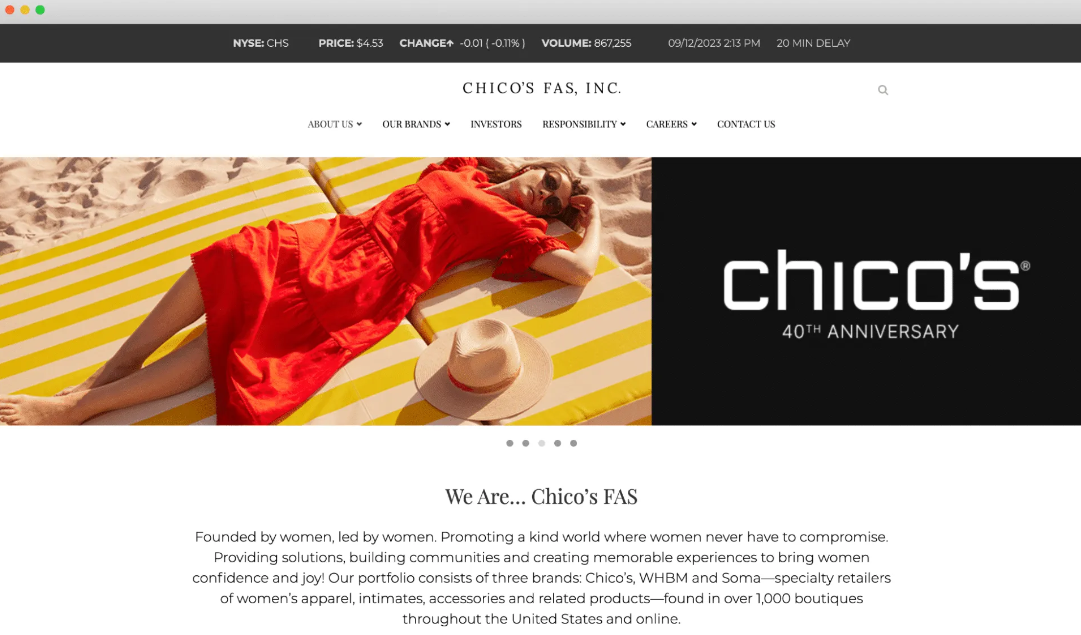
Chico’s FAS, which owns brands like Soma and White House Black Market, faced challenges with its outdated tech stack that made it difficult to deliver top-notch customer experiences.
In 2022, they adopted headless commerce to modernize their digital presence across all channels. This move allowed Chico’s to gain more flexibility, scale their operations effectively, and reduce their total cost of ownership (TCO) over time.
At the time, almost 40% of the brand’s sales were already coming from online channels, which made this digital transformation very important.
Here are a few ways this change benefited the company:
- Better Customer Experience: The advanced technology and a more connected commerce strategy gave them unrestricted opportunities for improved customer retention, satisfaction, and engagement.
- Reduced Total Cost of Ownership: This change led to a lower TCO with streamlined operations and unrestricted scalability because the drawbacks of their previous traditional platform were not holding them back.
- Increased Scalability & Flexibility: The brand could finally enhance its customizations to offer its customers a consistent and modern experience across all platforms, which also gave them unrestricted opportunities for growth.
2. GNC
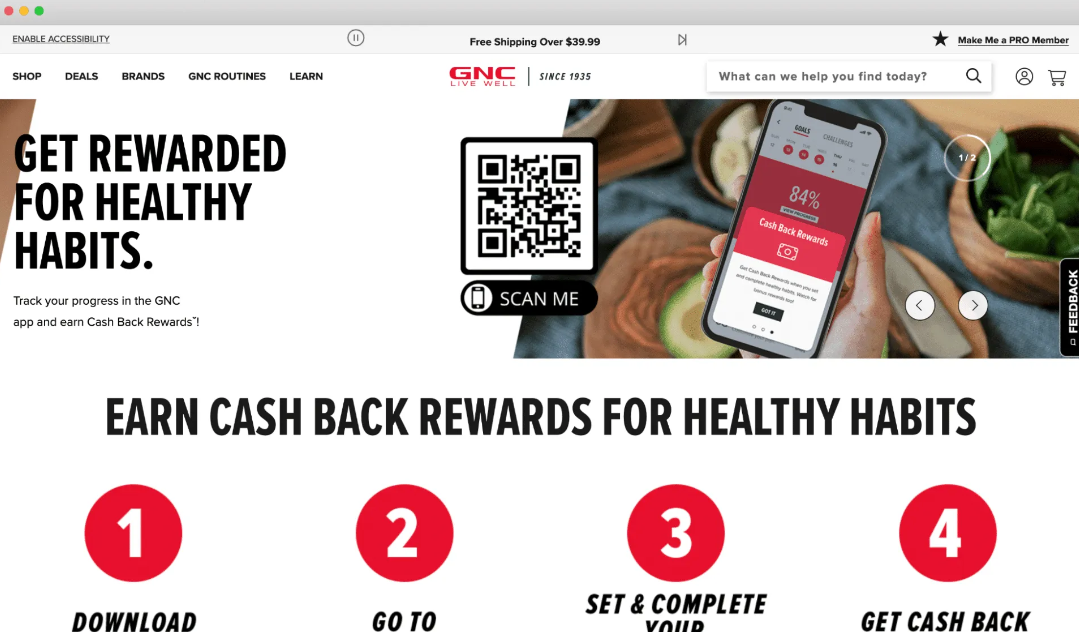
Known for its extensive range of wellness products and nutritional supplements, GNC is a global leader in the health and wellness industry. The company quickly saw the importance of having a mobile-friendly eCommerce platform. To meet their needs, they initially built a custom mobile app.
However, the app relied on outdated, unsustainable coding, which slowed its progress. They realized it wasn’t enough to serve their customers efficiently or meet the brand’s growing needs.
They turned toward headless architecture to overcome its mobile app challenges, which helped develop a future-proof application within a strict deadline. They integrated the existing systems and used existing code to deliver a fully functional app within 12 weeks.
As a result of their move toward headless commerce, their crash rate decreased by 75%, and they gained 40,000 new customers. Overall, they saw major improvements in their app store ratings, and their active mobile user count increased by 23%.
GNC, regardless of the sales channel, offered a one-stop shop to all of their customers, increasing their overall revenue by 55%.
Who Can Benefit From Headless Commerce?
If you’re expanding beyond an eCommerce website and exploring multiple sales channels, like a mobile app, marketplaces, or physical retail stores, headless commerce is an ideal choice. With headless commerce, you can experiment with innovative features, quickly adapt to changing consumer preferences, and broaden your overall reach.
Here’s a quick overview of how different businesses can benefit from headless commerce:
- Retailers: Expand into new sales channels, like marketplaces or mobile apps, easily without overhauling the entire system to improve customer reach.
- DTC Brands: Customize shopping experience across various touchpoints to create a seamless and personalized journey for the customers.
- eCommerce Businesses: Increase scalability and flexibility for faster adaptation to changing consumer preferences and market trends.
- Subscription-Based Businesses: Add dynamic content and personalized offerings to enhance customer retention and satisfaction.
- Startups: Build a scalable and future-proof foundation that grows with the business without heavy upfront costs.
- Enterprises: Efficient management of complex, multi-channel operations with independent scaling of frontend and backend systems.
- Mobile Commerce: Optimize mobile experiences with fast and responsive designs to meet the demands of on-the-go consumers.
Breaking the Mold: Unconventional Headless Commerce Applications for Traditional Businesses
Classic brick-and-mortar stores always had their own way of doing things. But now they can break away from the old playbook and embrace a new, digital-first strategy with headless commerce. To understand this better, let’s look at how these 5 traditional businesses can step out of their comfort zones and use headless commerce to redefine their customer experiences.
1. Home Services: Prime Time Window Cleaning
Prime Time Window Cleaning is a home services company that’s been operating with a traditional business model, just like many of its competitors. But it can use headless commerce to enhance customer interactions and streamline their service delivery. Here are a few examples of how this can be done:
- AR Service Preview: They can use AR features to visualize their cleaning services with before and after visuals. For example, a potential customer could use this feature to see how their window would look post-cleaning. This will give them a clear incentive to buy the brand’s services.
- AI-Powered Chatbots: AI-driven chatbots can gather details about the brand’s customers, like their specific needs and the number of windows they have in their house.
- Personalized Service Bundles: They can use their customer data to offer personalized service bundles, like window cleaning plus power washing, which can be added as dynamic content based on user interactions.
2. Industrial/Manufacturing Solutions: AlisQI
AlisQI is a Quality Management System software that helps businesses manage their quality control processes. Here’s how the company can use headless commerce to improve its quality management services:
- Customizable Dashboards: They can add customizable dashboards for their customers with real-time analytics and insights according to each client’s specific quality control needs. The dashboards can be adapted on the go to meet the requirements of different industries or clients.
- Dynamic Quality Certificates: They can generate personalized quality certificates based on individual customer preferences or regulatory requirements. For example, a customer concerned about sustainability could receive a certificate highlighting eco-friendly practices.
- Real-Time Quality Alerts: Trigger automated alerts or notifications when quality issues arise, ensuring that all relevant parties are informed promptly and can take corrective actions.
- Traceability and Recall Management: Use headless commerce to establish a robust traceability system. In case of product recalls, quickly identify affected products and notify relevant stakeholders, minimizing the impact on brand reputation and customer satisfaction.
3. Web Design: Clique Studios
Clique Studios is a web design and development company offering different services. Although not a conventional business, still it can benefit from headless commerce to deliver enhanced web design services. Let’s take a look:
- Continuous Development and Deployment: Clique Studios can use headless commerce for a continuous development and deployment (CI/CD) pipeline. This way, they can quickly iterate on website features and address issues without disrupting the user experience.
- IoT Integration: Clique Studios can use headless commerce to create interactive experiences that integrate with IoT devices. For example, a website could display real-time product information or offer personalized recommendations based on user interactions with connected devices.
- Multi-Platform Designs: They can add designs that are adaptable across different platforms, including mobile and desktop, without any damage to their overall aesthetics or performance.
4. Property Management: Fortune Restoration
Fortune Restoration specializes in property management and building restoration services. Here’s how it can modernize its services with headless commerce:
- Tenant Portals: These portals can offer real-time access to rental agreements, maintenance requests, and payment histories. They can be added along with other property management tools with the help of APIs for a more seamless experience.
- Virtual Property Tours: Add VR tours for properties managed by the company. These tours can further be customized based on the customer’s preferences, like highlighting specific amenities.
- Automated Maintenance Scheduling: They can use headless commerce to offer automated maintenance scheduling with reminders to book services through a simple, user-friendly interface.
5. Business Pitch Decks: Slidebean
Slidebean offers tools and services for creating compelling presentations, specifically pitch decks. Here’s how it can improve its pitch deck services using headless commerce:
- Personalized Recommendations: Based on user behavior and preferences, Slidebean can dynamically adjust the pitch deck’s content, design, and structure. For example, if a user spends more time on the financial section, the platform could suggest additional financial metrics or analysis tools.
- Collaborative Features: Slidebean can enable real-time collaboration on pitch decks, allowing multiple users to work together simultaneously. This can be particularly useful for teams or startups with distributed workforces.
- Interactive Elements: Sliedebean can use the flexibility of headless commerce to add interactive elements into pitch decks, like embedded videos, calculators, or interactive charts. This can enhance engagement and make presentations more dynamic.
The 3 Common Challenges Of Headless Commerce
Going headless offers you several benefits. However, you must weigh its adoption challenges to make sure it’s the right fit for you.
1. Learning Curve
There’s a learning curve for both non-technical and technical staff when it comes to transitioning from traditional eCommerce platforms to headless commerce. This means you may be required to research, invest in, and use learning sources for yourself and your teams.
2. Replatforming Difficulties
Moving from a traditional system to headless commerce requires careful planning. This can be slow and might cause downtime if your team is not already familiar with the new setup.
3. Complexity & Costs
Headless commerce complicates your existing systems and may be costly to implement and maintain. While it can save money in the long term, the initial setup and management phases are relatively more expensive.
Conclusion
With headless commerce, you can create a dynamic, content-driven online store. This approach offers you more flexibility, quicker launch times, and easier scalability. In the end, going headless will offer faster growth and modifications according to the changing market demands.
Creating a mobile app for your customers may seem like a small step, but it’s a giant leap toward building the future of headless commerce for your brand. Don’t know where to begin? AppInstitute can help you create stunning mobile applications with absolutely NO coding required. Don’t believe us? Take a look yourself!
Author Bio:
Burkhard Berger is the founder of Novum™. He helps innovative B2B companies implement modern SEO strategies to scale their organic traffic to 1,000,000+ visitors per month. Curious about what your true traffic potential is?
- Author picture: Here
- Gravatar: [email protected]
Last Updated on May 20, 2025 by David
0 thoughts on “Headless Commerce: Definition + Benefits And Examples”